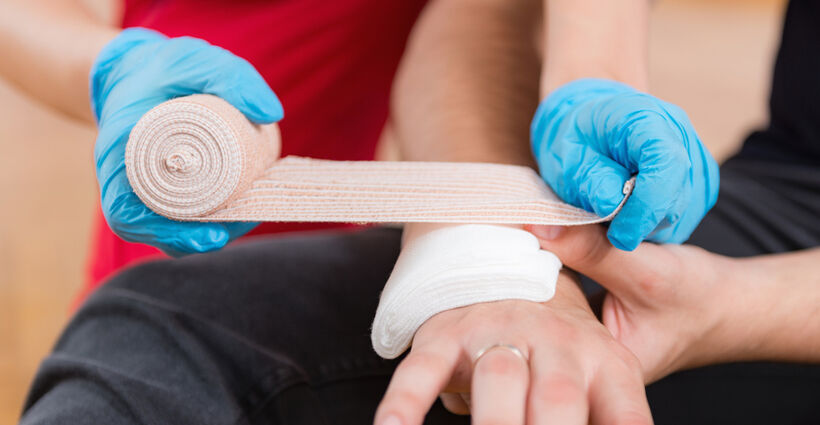As an outdoor enthusiast, venturing into the wilderness can be an exhilarating experience. However, it’s essential to be prepared for any unexpected situations that may arise. First aid skills are critical for outdoor enthusiasts, as they can help prevent minor injuries from becoming major emergencies. In this essay, we will discuss the essential first aid skills that every outdoor enthusiast should know, and why they are crucial for a safe and enjoyable adventure.
Why First Aid Skills are Important for Outdoor Enthusiasts
Outdoor enthusiasts often venture into remote areas where medical help may be hours or even days away. In such situations, basic first aid knowledge can be the difference between life and death. First aid skills enable outdoor enthusiasts to respond to emergencies promptly and effectively, reducing the risk of serious injury or illness.
Moreover, first aid skills can help outdoor enthusiasts avoid unnecessary trips to the hospital. According to the Wilderness Medical Society, outdoor enthusiasts are more likely to experience injuries and illnesses such as sprains, strains, cuts, and burns. With basic first aid knowledge, outdoor enthusiasts can treat these minor injuries and continue their adventure, rather than having to interrupt their trip to seek medical attention.
Essential First Aid Skills for Outdoor Enthusiasts
1. Wound Management
Wound management is a critical first aid skill that every outdoor enthusiast should know. Outdoor enthusiasts should be able to clean and dress wounds, as well as identify signs of infection. This skill is essential for treating cuts, scrapes, and puncture wounds, which are common injuries in outdoor activities.
2. Splinting
Splinting is another essential first aid skill that outdoor enthusiasts should know. Splinting can help immobilize injured limbs, reducing pain and preventing further injury. Outdoor enthusiasts should know how to create a splint using available materials, such as branches or rocks, and how to properly apply it to the affected limb.
3. Burn Management
Burns are common injuries in outdoor activities, especially when camping or cooking over an open flame. Outdoor enthusiasts should know how to identify different types of burns and how to treat them appropriately. This includes knowing how to cool burns, apply topical treatments, and when to seek medical attention.
4. Blister Management
Blisters are a common issue for outdoor enthusiasts, especially during long hikes or backpacking trips. Outdoor enthusiasts should know how to prevent blisters by properly fitting their footwear and using blister-preventing techniques such as moleskin. They should also know how to treat blisters by cleaning and dressing them, and when to seek medical attention if necessary.
5. Altitude Sickness
Altitude sickness is a common issue for outdoor enthusiasts who venture into high-altitude areas. Outdoor enthusiasts should know how to recognize the symptoms of altitude sickness, which include headaches, nausea, and fatigue. They should also know how to prevent altitude sickness by ascending gradually and taking rest days as needed.
6. Hypothermia and Heat Stroke
Hypothermia and heat stroke are serious conditions that can occur in outdoor activities, especially in extreme weather conditions. Outdoor enthusiasts should know how to recognize the symptoms of hypothermia and heat stroke, which include shivering, confusion, and slurred speech. They should also know how to treat these conditions by seeking medical attention immediately.
7. Navigation
Navigation is an essential first aid skill that outdoor enthusiasts should know. Outdoor enthusiasts should know how to use a map, compass, and GPS device to navigate their way back to civilization in case of an emergency. They should also know how to identify landmarks and use natural navigation techniques.
8. Emergency Communication
Emergency communication is a critical first aid skill that outdoor enthusiasts should know. Outdoor enthusiasts should know how to use emergency communication devices such as satellite phones, personal locator beacons, and two-way radios. They should also know how to send emergency signals, such as using a whistle or mirror signal.
First aid skills are essential for outdoor enthusiasts who venture into remote areas where medical help may be hours or even days away. Outdoor enthusiasts should know basic first aid skills such as wound management, splinting, burn management, blister management, altitude sickness, hypothermia and heat stroke, navigation, and emergency communication. These skills can help prevent minor injuries from becoming major emergencies and ensure a safe and enjoyable adventure.
It’s important to note that while first aid skills are critical for outdoor enthusiasts, they should not replace proper medical training. Outdoor enthusiasts should consider taking a first aid course to learn these essential skills and stay up-to-date on the latest first aid techniques. Additionally, outdoor enthusiasts should always carry a first aid kit with them, containing essential supplies such as bandages, antiseptic wipes, pain relievers, and any personal medications.
In conclusion, first aid skills are crucial for outdoor enthusiasts who want to stay safe and healthy during their adventures. By learning these essential skills and carrying a first aid kit, outdoor enthusiasts can enjoy their adventures with confidence and peace of mind.




